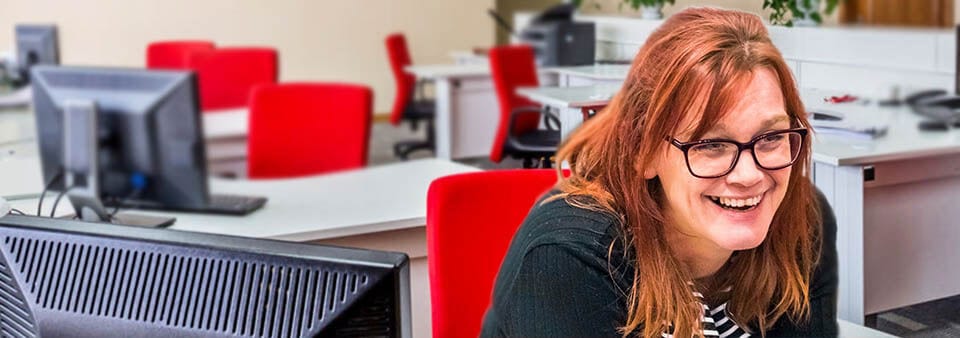Q: Why are consultation and participation so important?
Sally Swingewood: Consultation and participation are so important because you need to take everyone with you.
The more you involve people, the more they understand your business challenges and why you're doing what you're doing. If you involve them in in the decision-making process, they're much more likely to buy into those decisions and stick with them, because they understand the outcomes you're looking for and the benefits they will bring.
Worker consultation and participation are more than merely beneficial - they are essential. Any organization seeking to improve performance through a comprehensive approach to workplace well-being is destined to fail if it relies solely on a distant leadership team and the remote observations of external consultants.
Q: What's the difference between consultation and participation?
Sally Swingewood: People often confuse consultation and participation and we have learned that, in different countries and cultures across the world, there are various interpretations of the words. This is one of the reasons why they have become defined terms in ISO standards. So, when you are reading the occupational health and safety management system standard ISO 45001, for example, or ISO 45003, consultation is about listening to the views of the worker. Participation, on the other hand, is far more active. It's about involving those workers in decision-making.
Q: What does good consultation and participation look like?
Sally Swingewood: Good consultation and participation are about building a culture of trust, a safe culture where people feel they can speak up and they can really be honest about what their concerns are and what they think should be done about them. It's inclusive. It includes everybody, no matter their role or where their workplace is, or what hours they work, so that includes shift workers, remote workers, office workers, and factory workers. It isn't a select group, because that select group will almost certainly not understand all of the issues. Inclusivity is key.
It's difficult to define best practice - that's going to vary depending on the context of the organization. It's not enough to run a survey or ask for feedback on decisions already made. You don't earn trust or get engagement that way. You need to bring people with you to make the decisions stick in practice.
In particular, to ensure effective consultation, you may have to overcome obstacles such as:
- Literacy and language - there may be low levels of literacy in the workforce, or the country's official language(s) may not be the first language(s) for many workers. Consider aspects such as:
- Ensuring adequate time is set aside for effective two-way communication to take place
- Hiring interpreters, or training co-workers to interpret
- Translating information, having first ensured that it is written in clear language
- Using universally understood infographics and pictorial messages
- Offering language classes
- Culture and diversity - committees and representatives should reflect the workforce and provide safe, inclusive environments for discussion. It is worth remembering that some workers may feel uncomfortable or reticent addressing certain issues.
You should also ensure that you consider different working patterns - such as part-time, shift, and homeworkers - when deciding on the methods and timing of consultation and participation.
It is also essential to make sure that there is no reason for workers to be fearful of reprisals, such as disciplinary action or dismissal if they report issues or concerns. Whistleblowing policies or other anonymous reporting arrangements can encourage engagement.
Finally, one of the most overlooked but critical steps in consultation and participation is timely feedback: what action has actually been taken? What has changed? What difference has it made?
Q: What are the key tools/models/techniques that employers should be using?
Sally Swingewood: There's no one way of doing consultation and participation. The tools and techniques you use to get people involved and elicit the feedback you need is going to depend on you, your situation, and your workforce. But it can include things like one-to-one conversations, perhaps between a manager and a worker or bigger group conversations, even whole organization conversations, if that's possible for you. It doesn't need to be in person, it can be virtual, it can be on video calls or phone calls. The key is to use whatever people feel comfortable with and leads to them trusting each other and feeling safe to talk. You can also use employee surveys, toolbox tools, or an official committee if that's what works.
To summarize, you should consider using a mix of methods to consult workers, including:
- Face-to-face directly - Consultation can take the form of scheduled interviews, informal walkabout chats, or formal meetings, particularly for areas such as occupational health and safety. Focus meetings can also be arranged with groups, or the whole workforce. Workers can be assigned to workgroups to explore ways of addressing specific issues such as psychological health and safety.
- Through worker representatives - You can use face-to-face methods to consult with worker representatives, which might be more practical in larger workforces, or you can set up a dedicated, formal worker committee. For the latter, you need to consider its workings and composition (ensuring that it is inclusive and representative of the entire workforce), as well as its agenda and support requirements.
Indirectly - Workers may also be consulted indirectly, using a variety of mechanisms, such as staff surveys, suggestion schemes, noticeboards, newsletters, and websites. Dedicated email addresses or phone lines can be arranged for receiving worker feedback.
Q: How often should consultation and participation take place?
Sally Swingewood: Again, that's going to depend on the organization and its context - but make it meaningful. You don't necessarily need to consult on the tiny things, but anything substantial needs meaningful input and careful consideration of the views of those who will be affected by the decision. They need to understand all the relevant issues, pros and cons.
Q: How does an organization select the right people to be involved in consultation and participation?
Sally Swingewood: Everyone should be involved. EVERYONE!
Generally speaking, it's not really a question of how you select. The only time this might be different is where there are formal worker representatives who liaise with the top management in your organization. But even then, you've got to be very careful because single representatives are very unlikely to be able to represent every single worker or group of people with differing needs. If you have worker representatives, make sure they genuinely are representative, and they have consulted with all of the people who are going to be affected.
Q: How do organizations support consultation and participation when people are working from home?
Sally Swingewood: It doesn't really matter where people are based or how they work, and you don't have to be in the same room as somebody to have effective participation and consultation. There are many ways of engaging with workers if you cannot meet them in person. Methods of consultation and participation that you use for in-person meetings could be just as effective in the virtual environment. In fact, evidence suggests that consultation and participation can be higher when meetings happen virtually, as workers may feel more comfortable and more inclined to be open and honest if they're not in the same room as you.
The key is ensuring that workers have access to these tools. It is also important not to rely on a single method, such as email - this may be part of the toolkit, but you cannot assume that the email has been received, read, and most importantly, understood.







